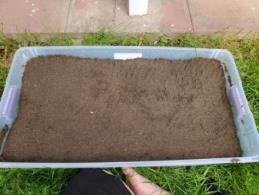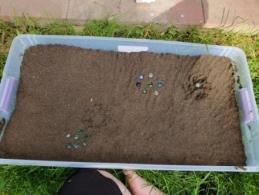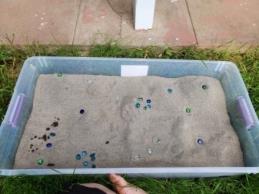Archaeological Discovery Through Erosion
Created by Portland State University Student Heather Alley
With Special Appearances from Caidenn Alley and Katelynn Alley
Created by Portland State University Student Heather Alley
With Special Appearances from Caidenn Alley and Katelynn Alley





Step 2: Stand up the erosion table and fill in any holes that may have appeared if the stratigraphy layers shifted.

Step 3: Using a hose, with the water running low, have someone start to drip water down from the top, have someone else look to spot artifacts as they appear from the river as it erodes the stratigraphy away.

Erosion Doesn’t just reveal objects, in can move them too. Check out the objects that were found in the run off piles after the river’s were made

Video Editing Software Used:
https://app.clipchamp.com
Music Acquired From:
https://www.epidemicsound.com/music/featured
Music:
Gravel in my Shoe
By: Harry Edvino
Permission was given to the creator of these videos for Caidenn and Katelynn to appear in them as well as for these videos to be posted online.